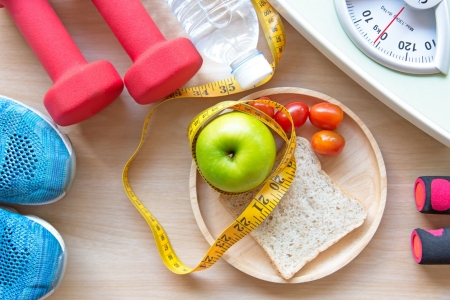
Whether you’re battling the “quarantine 15,” struggling to squeeze daily workouts into your schedule or feeling out of shape, establishing a fitness routine will help. But how do you know which exercises will benefit you most?
“We recommend a personal fitness assessment for anyone looking to start a fitness regimen,” says Jonathan Davalos health and fitness trainer at Atlantic Health System’s Chambers Center for Well-Being. “It will let you know where you are in the process and what you need to work on to achieve your goals.”
The Chambers team combines its expertise with the latest technology to perform a personal fitness assessment in one hour. The assessment includes these five steps:
- Health questionnaire – Your answers will help us understand more about your current fitness and health habits, diet, injury history, medical history and fitness history.
- Goal discussion – Do you want to gain muscle mass? Get more flexible? Lose weight? Increase balance. “Learning about your goals allows us to show progress over time,” Davalos says.
- Body composition analysis – To measure body mass index, muscle mass, fat mass, hydration level and other key values, you’ll be asked to stand on the Seca® medical body composition analyzer. Our team will enter your height, weight and age onto the device (which looks like a scale) and then perform a test that sends a weak electrical current throughout the body. “The machine differentiates fat mass from muscle mass and shows where it’s distributed throughout the body,” Davalos says. You’ll receive a printout listing all key values after the test, and a staff member will review them with you.
- Movement assessment. A fitness specialist will walk you through seven global movement patterns to assess your current flexibility level and learn where improvement possibilities exist.
- Cardiovascular assessment. During this test, you’ll wear a heart rate monitor while you’re walking on a treadmill. This will help a fitness specialist measure the maximum rate of oxygen your body can use during exercise. “The results tell us your current aerobic capacity,” Davalos says.
At the end of your assessment, you’ll receive your Seca® test results. You’ll also get generalized fitness recommendations. “We’ll use your results to recommend different types of training, such as whether you would benefit most from strength training, aerobic training or both,” Davalos says.
A few days later, you’ll receive a detailed exercise plan listing specific exercises you can do at home, at the Chambers Center or at a facility of your choice. Each plan is personalized. “For a novice, we might recommend personal training, nutrition counseling or a visit with their primary physician,” Davalos says. “For someone who’s already farther along in their process, the exercise plan might be the sole recommendation.”
At each step of your fitness assessment, Chambers Center for Well-Being team members will follow COVID-19 safety protocols, including social distancing, hand sanitizing and thorough cleaning of all equipment. Team members will wear masks, and we ask you to do the same.
For more information, call 973-971-6301 or view our menu of services >